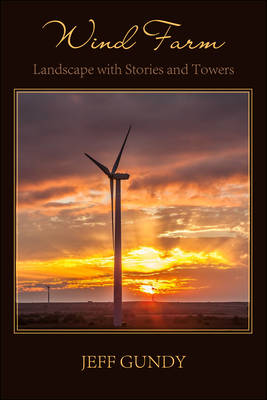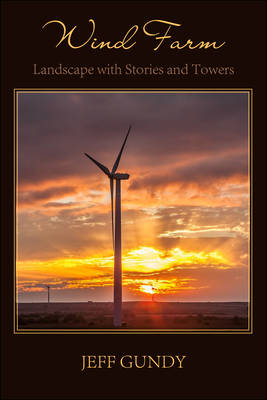
- Afhalen na 1 uur in een winkel met voorraad
- Gratis thuislevering in België vanaf € 30
- Ruim aanbod met 7 miljoen producten
- Afhalen na 1 uur in een winkel met voorraad
- Gratis thuislevering in België vanaf € 30
- Ruim aanbod met 7 miljoen producten
Omschrijving
Wind Farm: Landscape with Stories and Towers explores the human and natural geography of the Illinois prairie landscape of Jeff Gundy's youth, transformed long ago by the grid system of roads and ditches and intensive agriculture, and altered again by a vast wind farm. These deeply personal yet wide-ranging lyrical essays-whimsical, practical, and mystical, sometimes within the same paragraph-range across football and chicken farming, power grids and Mennonite history, folk music and mound-builders, set off by Gundy's own photographs. As industrial production of corn, soybeans, and energy becomes pervasive, and farmsteads and human populations among the towers dwindle, Wind Farm investigates the imagined past and intricate present of one small portion of the prairie, and glimpses possible futures for it and the planet.
SAMPLE:
A big wind farm runs across the farm I grew up on and for miles to the west and north, a hundred towers combing the wind day and night, giant arms turning, red lights blinking in unison through the nights. Some groups still fight to keep them out, claiming they kill birds and bats, confuse human thought patterns with their churning, even disturb weather patterns, or might, or could-but here they are. They seem strange and wonderful to me, mostly, but I'm only around for a couple of days once or twice a year when we make it out to see my parents.
The beauty of wind turbines is awkward and pragmatic, like the great blue heron's-or, better, the great egret, which is snowy white as the towers. A beauty years in the making, expensive and complicated, an engineered and calculated beauty requiring access roads and giant cranes, buried cables linking the great spindly machines. They are lonesome even in their clusters, keeping their distance, the way farmers have always been lonesome. The giant blades thrum their two notes day and night, yielding and using the invisible wind, sifting for power, sending it off to be used with no knowledge of where, of how. . . .
The new turbines are something else entirely. Some people call them ugly, mostly for reasons having nothing to do with aesthetics. I always suspected the resistance to wind farms is both more and less political than people want to admit, but when this project began I didn't really know much about that, or about many related matters. If it's just ugly we're talking about, we need to talk about the whole enterprise of industrial agriculture, the gridded landscape and the skinned prairies turned to monocultures, herbicides, pesticides, chemical fertilizer, all the rest. The roads, like a set of giant bars across a third of a continent, practical in the extreme if you're not a pheasant or big bluestem or a nomadic hunter-gatherer.
Specificaties
Betrokkenen
- Auteur(s):
- Uitgeverij:
Inhoud
- Aantal bladzijden:
- 172
- Taal:
- Engels
Eigenschappen
- Productcode (EAN):
- 9781953252456
- Verschijningsdatum:
- 15/12/2021
- Uitvoering:
- Paperback
- Formaat:
- Trade paperback (VS)
- Afmetingen:
- 152 mm x 226 mm
- Gewicht:
- 317 g

Alleen bij Standaard Boekhandel
Beoordelingen
We publiceren alleen reviews die voldoen aan de voorwaarden voor reviews. Bekijk onze voorwaarden voor reviews.








